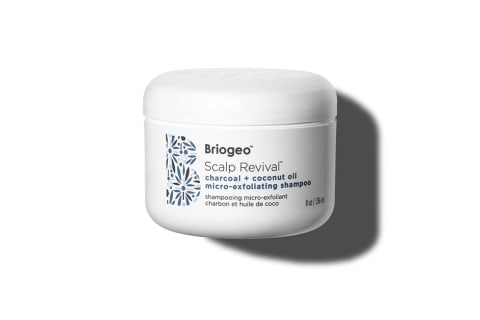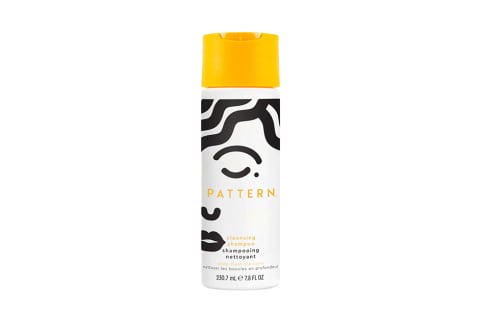And like skin care, some hair care products are certainly optional, but your hair might look and feel a whole lot better with them. Clarifying shampoos are one of those often overlooked but occasionally hair-saving products. Clarifying shampoos are amped-up versions of the day-to-day ones that thoroughly clean both the hair follicles, scalp, and hair fiber. “The main difference lies in the active ingredients in each formula—hair detoxes often rely on natural extracts and oils to remove buildup, while clarifying shampoos typically contain synthetic ingredients such as silicones and sulfates,” certified trichologist, celebrity stylist, and founder of scalp-first hair care brand Act+Acre Helen Reavey tells mbg. However, when it comes to clean and sustainable beauty, the two are often used interchangeably. To be frank, there are definitely “clarifying shampoos” out there with zero silicones or sulfates, and there are definitely “detox shampoos” that contain those additives. To sum up, don’t get too caught up in the language. If you wash your hair every other day, then you can use a clarifying shampoo every other week. Your strands are likely more oily, so the risk of excessive dryness is fairly low if you follow this schedule. However, for those with dryer hair or a less oily scalp, you probably only wash once or twice a week overall. If that’s the case, then use a clarifying shampoo once a month, maybe twice a month if your strands are craving it—more on that in a bit. That being said, if you’re using a cleansing shampoo more than once a month and realize you have to use an oil before your wash in order to prevent your hair from feeling crispy, then you should dial it back, Reavey says. Apart from helping you get a deep clean, scalp massage works wonders for the health of your scalp—and research echoes this praise. In fact, in a 2016 study, a small number of men received a daily four-minute scalp massage. At the conclusion of the study, the investigators found an increase in hair thickness1. A more recent 2019 study found that of the 300 or so participants who followed a specific massage regimen, nearly 70% reported improved hair thickness at the end2. If you want to learn more about scalp massage or need a step-by-step tutorial—we’ve got you covered here. “Separate your hair down the middle and work the shampoo into the scalp, letting it rinse throughout the rest of the hair,” she notes. The lengths and tips will naturally get a quick coat of the clarifying shampoo from the runoff but not more than they need. Plus, hot water will dry out the skin on your body and your face anyway, so it’s best to skip the heat altogether. Here are a few signs you might need a deeper cleanse: Even if you’re experiencing a momentary bout of scalp dryness (this frequently happens when the weather cools down), then you should put your clarifying wash to the side for a bit. Again, you wouldn’t use a detoxifying clay mask on your skin if it’s already too dry or irritated—the same rules apply here. You’ll want to wait at least two weeks after getting color to use a clarifying shampoo. To be frank, you probably won’t need to use one for a month post-appointment given that your stylist likely gave your scalp a deep cleaning in the salon anyway. If you have a gloss, then you should limit the use of clarifying shampoos in general, as the color is more susceptible to fading, Sanchez says. All in all, ask your colorist when you’re in the chair when it’s safe to use a clarifying wash. If you plan on using a clarifying shampoo regularly (once or twice a month), then it is worth investing in a professionally formulated product. You don’t need too much of the product for each wash, and with the slow frequency, your product will last you a few months at the very least—aka, you’ll get a bang for your buck, which makes it all the more worth it. If you take a close look at your scalp and see buildup from hair products, or if your hair continuously feels oily even right after you wash it, then you might want to consider a scalp scrub, Reslan says. If you’re on the hunt for a scalp scrub, look for one with tiny and gentle granules, not large crystals or salts. These will be far too harsh on the scalp and create tears and trigger irritation. Chemical exfoliants like glycolic acid can be beneficial as well. Clarifying shampoos can encourage a healthier scalp with proper use by clearing buildup. But, as we said, clarifying shampoos are strong products, and they can throw off the balance of your scalp microbiome if used incorrectly. Your scalp is full of natural oils that are like food to the microbiome—as in, extremely necessary. So when those oils are fully stripped, that’s when you run into problems. “When overused, clarifying shampoos can definitely push the scalp microbiome off balance, causing dryness and making the scalp more prone to conditions such as dandruff and irritation,” Reavey warns. This is why we recommend skipping clarifying cleansers if you do experience excessive dryness, dandruff, or irritation or if you’re prone to scalp eczema or psoriasis. Like many things in beauty, potent products call for strict regimens, and clarifying shampoo is a perfect example of such.





